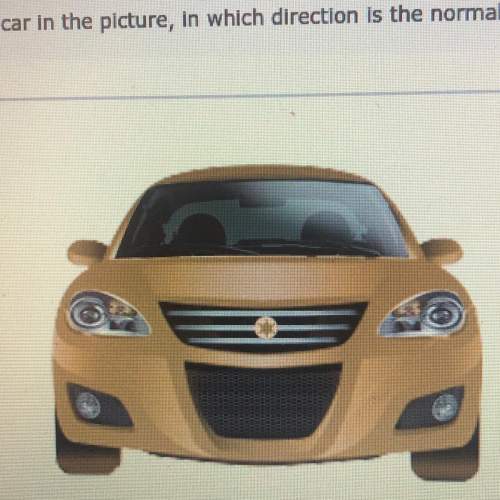

Answers: 2


Other questions on the subject: Physics

Physics, 22.06.2019 00:00, faithcalhoun
How do the measurements of charge at the different locations on the sphere compare to each other? the charge measurements are different at all locations on the sphere. the charge measurements are virtually not the same at all locations on the sphere except for the charge at the very top and at the very bottom that are equal. the charge measurements are virtually the same at all locations on the sphere except for the charge at the very top. at the top, the conductive sphere has a small disk that is made of different material. the charge measurements are the same at all locations on the sphere. what happens to the charge on the conductive sphere when it is connected to a source of charge such as the electrostatic voltage source? nothing will happen because no charge goes around the surface of the sphere. the charge on the conductive sphere spreads out over the surface of the sphere; being greater in some specific locations on the sphere. the charge on the conductive sphere spreads out uniformly over the surface of the sphere. the charge on the conductive sphere spreads out non-uniformly over the surface of the sphere.
Answers: 3

Physics, 22.06.2019 02:00, llamasking
Chapter 23, problem 075 the figure shows a geiger counter, a device used to detect ionizing radiation (radiation that causes ionization of atoms). the counter consists of a thin, positively charged central wire surrounded by a concentric, circular, conducting cylindrical shell with an equal negative charge. thus, a strong radial electric field is set up inside the shell. the shell contains a low-pressure inert gas. a particle of radiation entering the device through the shell wall ionizes a few of the gas atoms. the resulting free electrons (e) are drawn to the positive wire. however, the electric field is so intense that, between collisions with gas atoms, the free electrons gain energy sufficient to ionize these atoms also. more free electrons are thereby created, and the process is repeated until the electrons reach the wire. the resulting "avalanche" of electrons is collected by the wire, generating a signal that is used to record the passage of the original particle of radiation. suppose the radius of the central wire is 24 âµm, the inner radius of the shell 2.3 cm, and the length of the shell 14 cm. if the electric field at the shell's inner wall is 2.8 ă— 104 n/c, what is the total positive charge on the central wire?
Answers: 1


Physics, 22.06.2019 18:30, ptrlvn01
Two 2.0-cm-diameter disks face each other, 1.0 mm apart. they are charged to ±10 nc. what is the electric field strength between the disks? a proton is shot from the negative disk toward the positive disk. what launch speed must the proton have to just barely reach the positive disk?
Answers: 1
You know the right answer?
(Relationships): A balloon floats at 6 meters in the air. If it loses half of its gravitational pote...
Questions in other subjects:



Mathematics, 22.01.2020 07:31




Chemistry, 22.01.2020 07:31

Mathematics, 22.01.2020 07:31

Mathematics, 22.01.2020 07:31





